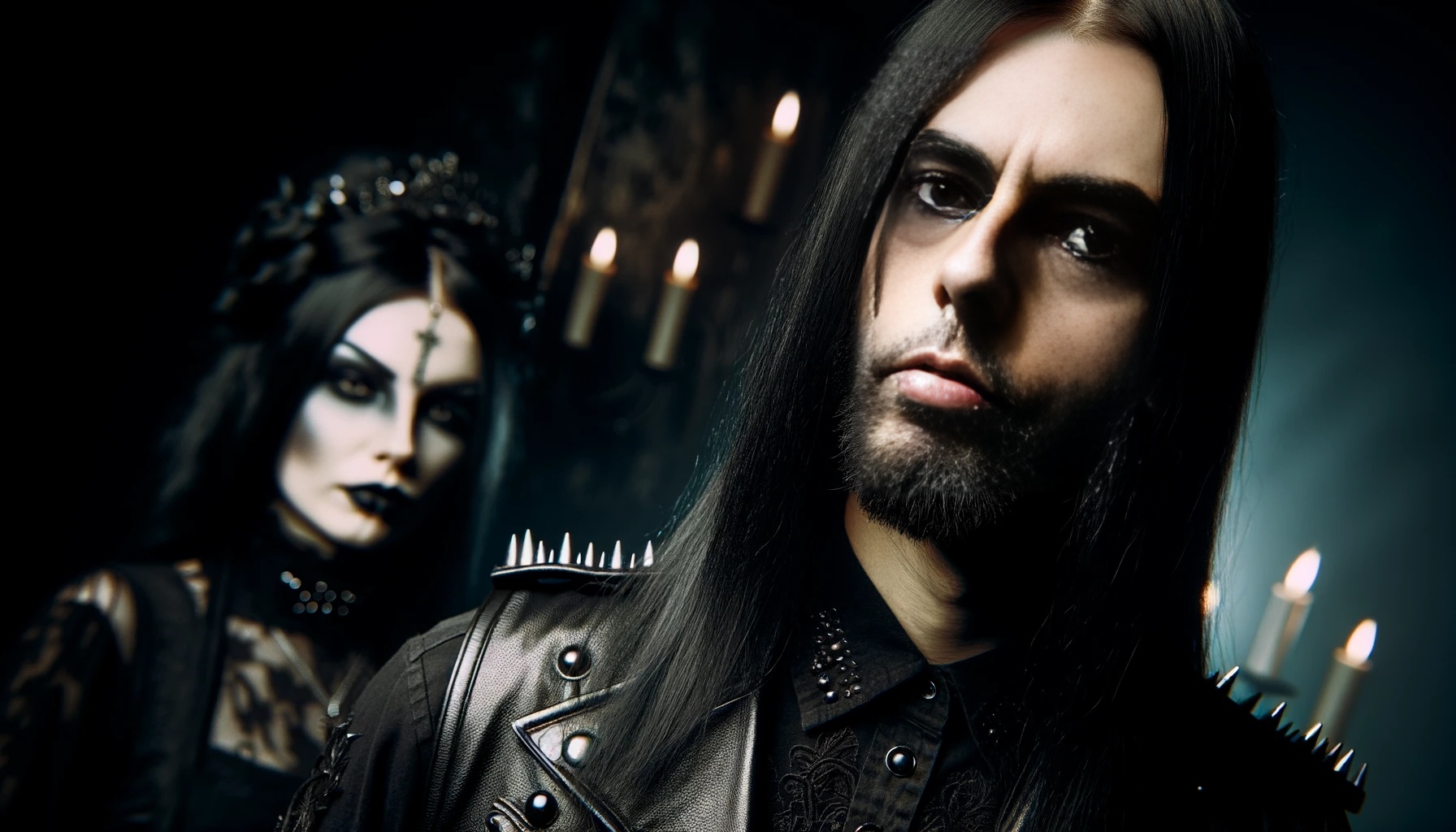When you mention Goth culture to someone who doesn’t live and breathe it, their knee-jerk reaction is as predictable as it is infuriating. Goth? Oh, that’s just a fashion phase, right? A bunch of sad kids in black who outgrow their eyeliner and mesh gloves the moment they get their first “real” job. Mainstream society, once again, completely misses the point. The Goth scene is so much more than a dark wardrobe and a brooding disposition. But no, they can’t be bothered to dig beneath the surface, can they? After all, critical thinking is about as common these days as a Bauhaus reunion tour.

The Mainstream’s Lazy Perception of Goth
Most people don’t get Goth culture because they never try. They don’t look beyond the black lipstick, the heavy boots, or the perceived melancholy. To them, it’s just a Halloween costume, a phase teenagers go through before embracing the beige monotony of adulthood. But that’s the shallow, ignorant take. The truth is, Goth is an artistic and emotional deep dive that most of society lacks the guts or imagination to explore. Goth is a way of life for those who refuse to settle for the saccharine, surface-level garbage the mainstream tries to feed us.
It’s not about being sad or “dark for the sake of it.” Goth culture is an honest, unfiltered exploration of emotions — emotions people are too afraid to confront, let alone express. Sure, it embraces sorrow, but it doesn’t stop there. It explores passion, rage, euphoria, and everything in between. It acknowledges that life is complex, full of shadows, and not all of them are bad. But the average person? They don’t want to deal with that complexity. It’s much easier to dismiss Goth as “just a fashion statement” than to confront the uncomfortable truths it brings to light.

Goth Culture: Beyond Black Clothes and Melancholy
Let’s just crush this superficial stereotype right now: Goth is not a fashion trend. Sure, the aesthetic is iconic, but it’s not the heart of Goth culture. The clothes, the makeup, the music — they’re all expressions of something deeper, more profound. It’s not a look you adopt to fit in; it’s a form of self-expression that reveals a person’s relationship with art, mortality, and the human condition. Dressing in black isn’t a cry for help; it’s a statement that says, “I’m not afraid to confront the darker side of life.”
Fashion is the least of what defines Goth. It’s like judging a book by its cover and missing the entire narrative. Goths are drawn to art, literature, and music that delve into emotions and ideas most people are too timid to even contemplate. And here’s where the mainstream really misses the mark. Goth isn’t about gloom and doom — it’s about exploring all of life’s emotions with brutal honesty. Goth music, for example, isn’t all dirges and moaning about death (though, let’s be real, there’s some epic material on that front). It’s a complex genre with a range of emotions and themes that go from haunting beauty to chaotic energy.

Art and Music in Goth Culture
The music, the poetry, the literature — these are not just hobbies for Goths. They’re fundamental to the culture. The lyrics of bands like Sisters of Mercy, The Cure, or Siouxsie and the Banshees aren’t just words set to a beat; they’re reflections of the inner turmoil, the questions about life, death, and everything in between. Goth music isn’t afraid to ask the uncomfortable questions or dive into feelings that most mainstream tunes dance around.
And it’s not just music. Think about the visual artists who have shaped Goth culture. Edward Gorey’s macabre illustrations, Hieronymus Bosch’s nightmarish depictions of hell, or even the gothic architecture of old cathedrals — these are all part of the goth aesthetic. There’s a deep appreciation in the scene for beauty that’s dark, strange, or unsettling. It’s the anti-pop culture, where everything is polished and predictable, designed to appeal to the widest (read: blandest) audience possible.

Then there’s literature. Goths are devourers of books, especially anything that questions the nature of life, death, and the in-between spaces where most people are too scared to tread. From the works of Edgar Allan Poe to the philosophical musings of Friedrich Nietzsche, Goth culture is intellectually rich and varied. You’d be hard-pressed to find a Goth who isn’t well-versed in literature that makes you think, not just feel.

Goth as a Rebellion Against the Mainstream
Goth is, at its core, a rebellion. And not the cheap, plastic rebellion you see in teenage TV dramas. It’s not about fitting into some “outsider” box to look cool or edgy. It’s a rejection of the shallow values that mainstream culture holds dear. The obsession with material success, the need to conform to social norms, the perpetual smiling through life as if everything is fine — Goths don’t buy into any of that.
In a world that demands you act happy, smile, and pretend everything’s okay, Goths refuse. They embrace the fact that life is messy, painful, and full of unanswered questions. They’re not scared of the shadows that most people flee from. In fact, they dwell in them, seeking out the beauty that hides within. Mainstream culture can’t handle that. It’s too obsessed with perfection and happiness, too focused on a sanitized version of life that makes everyone comfortable. Goths? We don’t do comfort. We do reality.

The Emotional Depth of Goth
The mainstream cannot fathom the emotional depth of Goth culture because it’s too focused on shallow expressions of emotion. It worships at the altar of false positivity. If you’re not happy, you’re broken. If you’re sad, fix it. Therapy, medication, distractions — anything to avoid sitting with discomfort or acknowledging that some things can’t be fixed. The Goth scene, on the other hand, embraces emotional complexity. It allows space for melancholy without demanding an immediate solution.
Goth music doesn’t shy away from the difficult stuff. It stares right into the abyss, unblinking. It’s an exploration of the human condition, which includes despair but also love, lust, anger, confusion, and ecstasy. Goth is multifaceted, layered, and raw. The reason mainstream culture is so dismissive is that most people don’t have the stomach for such emotional honesty. It’s too real, too confronting. Goth culture drags all that stuff to the surface — the stuff we’re all thinking but too afraid to say out loud.

Goth is a Culture of Honesty
What terrifies the mainstream most about Goth culture is that it doesn’t lie. It doesn’t pretend everything is okay when it’s not. Goth is about authenticity. It doesn’t sugarcoat life’s struggles or downplay the darker side of existence. This terrifies people because most of society is based on lies — the lie that success brings happiness, the lie that life is fair, the lie that we’re all meant to live these cookie-cutter, Instagram-filtered lives. Goth culture rejects all of that.
Instead, it celebrates authenticity. It doesn’t shy away from death, darkness, or pain. But it also celebrates beauty, creativity, and self-expression in a way that few other subcultures do. For a Goth, darkness isn’t something to be feared. It’s something to be embraced and explored. That’s what makes Goth so powerful and so misunderstood.

Wrapping Up: The Mainstream Will Never Understand
In the end, mainstream culture will never truly understand Goth. And that’s okay. Because Goth isn’t meant for the masses. It’s meant for those who dare to see the world without rose-colored glasses. For those who know that beauty can be found in the shadows, that sadness doesn’t need to be fixed, and that there’s nothing wrong with expressing who you really are, no matter how dark that may be.
So, the next time someone tries to dismiss Goth as a fashion trend or a phase, just smile and know that they’ll never get it. They’ll never have the guts to look beneath the surface and see what’s really there.

Want to dive deeper into the world of Goth, metal, and provocative ideas? Visit my blog at here for more brutally honest takes. Also, connect with me on all social platforms through this link. Let’s keep the conversation going… if you can handle it.




